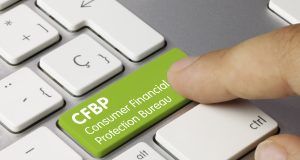Led by increases in personal consumption, government spending, and residential investment, the US economy grew at an annual rate of 2.0 percent in the third quarter, the ""Bureau of Economic Analysis"":http://www.bea.gov/ (BEA) reported Friday, faster than economists expected and a strong rebound from the 1.3 percent growth rate in the second quarter. Economists surveyed by Bloomberg had expected an increase of 1.9 percent.
[IMAGE]While not an absolutely strong performance--the economy has grown an average of 2.5 percent since 1991--the improvement over the second quarter bolsters arguments that current economic policies are working. That growth is below the longer-term average, though, is a reminder the economy remains weak.
Friday's ""BEA report"":http://bea.gov/newsreleases/national/gdp/2012/pdf/gdp3q12_adv.pdf was an ""advance estimate"" based on incomplete data subject to revision or, in some cases, data that has not yet been reported.
The BEA said it used estimates assuming a decrease in nondurable manufacturing inventories, an increase in non-motor-vehicle merchant wholesale and retail inventories, an increase in exports of goods, excluding gold, and an increase in imports of goods, also excluding gold.
[COLUMN_BREAK]According to the report, consumer spending contributed $47.8 billion of the overall growth of $67.7 billion, up from the $35.7 billion growth in consumer spending in the second quarter. Government spending added another $22.4 billion in the third quarter, reversing a subtraction of $4.3 billion in the second quarter.
Residential fixed investment was accounted for $12.3 billion of the third quarter GDP increase, up from the $7.2 billion contribution in the second quarter.
Overall, residential fixed investment was 2.73 percent of GDP in the third quarter, up from 2.65 percent in the second.
The 2.0 percent annualized growth rate matches the growth rate in the first quarter and is faster than the 1.3 percent growth in third-quarter 2011.
The positive contributions from consumer spending, government spending, and residential investment were offset by downturns in exports and non-residential fixed investment.
Personal consumption improved 2.0 percent in the third quarter compared with 1.5 percent in the second quarter and 1.7 percent in the third quarter last year. Government spending grew 9.6 percent in the third quarter, the first quarterly improvement since the second quarter of 2010. Residential fixed investment increased 14.4 percent in the third quarter, up from 8.5 percent growth in the second and 1.4 percent in the third quarter of 2011.
Inflation, as tracked through GDP, was 1.5 percent in the third quarter, down from 1.6 percent in the second. Excluding food and energy, inflation was 1.6 percent in the third quarter, down from 1.8 percent in the second.

 theMReport.com Your trusted source for mortgage banking news
theMReport.com Your trusted source for mortgage banking news









